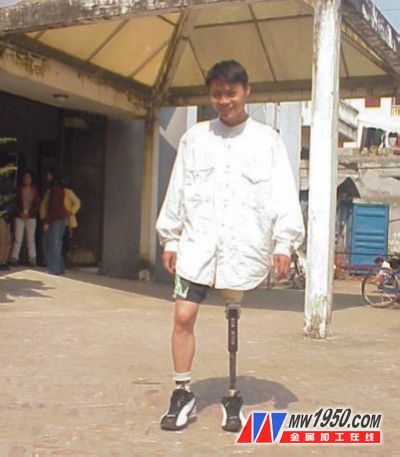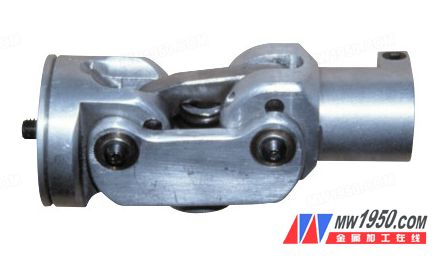Regardless of the angle, Dr. Ernest Burgess is an outstanding figure. In March 2000, six months before the death of Dr. Burgess, 89, US Senator Robert Kerry gave him a high evaluation, saying that he served "this country and the entire international community." Senator Kerry said: "As a Vietnam veteran and amputated patient, I struggle with the trauma of the war every day; and Dr. Burgess pioneered the use of new surgical techniques to make amputated patients more comfortable and flexible. Mobile. Personally, without the pioneering spirit of Dr. Burgess, I can't enjoy the joy and passion of running, skiing, golfing, climbing, etc."
Ernest Burgess graduated from Columbia Medical College in 1937. He served in the Pacific Theater during World War II. He saw too many amputated patients, which also made him have a more direct understanding and understanding of amputation, so Ernes I am determined to use the power of my life to relieve these people. In order to meet such requirements, Dr. Ernest began to focus his research on how to improve prosthetics. In 1964, at the request of the Vietnamese government, he created the Prosthetics Research Study, or PRS, which was later known as the PRS. The focus of the work was on the needs of amputated patients and the development of lightweight, high-tech prostheses. One of their research and development results is the famous AFMA (automatic lubrication system for mobile devices). They use software called Seattle ShapeMaker ® design a prosthetic socket fit exactly the desired individual, which is the most important part of AFMA. Another result is that the Seat Foot ®, a prosthetic foot with a cantilever spring, allows the patient to walk the way to be no different from normal people.
In the initial stage of making a plaster model of the prosthetic cavity, the company's overall technical level is still relatively low. Now, you can see advanced technology in every aspect of production. First, the engineer puts a properly sized gypsum into a three-dimensional digitizer that scans and measures its size. Engineers then the measured data input to a computer equipped with Seattle hapeMaker ® software. At the same time, the prosthetist also began a comprehensive clinical evaluation of the patient and made corresponding changes to the plaster used according to the evaluation results; then, the modified gypsum was placed on the engraving machine, so that the processed cavity plaster model was processed. Will be very accurate and beautiful. Next, a 5mm thick polypropylene plastic sheet is machined into a shell that covers the plaster model and then further modified. If the amputation position is above the knee, then a fake knee joint and an outer shell that fits the knee joint need to be machined. In this way, a prosthetic limb is initially formed. The entire process takes only a few hours, but the prosthetic limbs produced can be used for at least 3 years. Although some parts, such as prosthetic feet or false knee joints, may be worn for less than 3 years due to wear and tear, they are easy to replace.
In 1989, in response to new challenges, Dr. Ernest established the Prosthetics Outreach Foundation, POF, in Seattle to provide prosthetics for amputation patients in developing countries. Vietnam became his first aid recipient. In 1991, the ProstheticsOutreach Center, the POC, was established in Hanoi. In addition to providing daily medical services, the hospital also produces prostheses with AFMA systems. In the first 18 months after its establishment, the hospital produced a total of 1,100 prostheses; for the same period of time, only 150 traditional prostheses were produced.

Patient with prosthesis
POC employees in Vietnam visit some remote rural areas every month, and their footprint extends from the Vietnam-China border to the central city of Da Nang. During POC staff visits, they conduct health assessments of patients and make plaster models based on their specific circumstances. After the artificial limbs were manufactured in Hanoi, the POC staff carrying these prosthetic limbs returned to the patient's location again to help them install and make necessary repairs to some of the prostheses according to the actual situation. For each visit of 2 to 3 days, 60 prostheses can be used. At the same time, in order to meet the needs of Vietnamese patients, POF also deliberately designed a prosthesis made of vulcanized rubber, which is undoubtedly a boon for patients engaged in farming, because the material is very wear-resistant. Mechanical engineer Ray Pai said: "If the prosthetic limbs produced in the United States or Europe do not replace parts, it is difficult to use for 18 months in tropical climates.
In the United States, it takes between $250 and $400 to produce a prosthetic limb, but it has poor wear resistance compared to a prosthetic body made in Vietnam that costs only $3.50. â€
Since 1998, in the town of Ba Vi, about 50km west of Hanoi, POF has funded a local medical device manufacturer that produces parts related to prostheses such as ankles, adapters, etc., which are Used on the prosthetic assembly line of POF. In Ba Vi, one of POF's priorities is to use as much local resources as possible, ultimately making it a self-sufficient factory. In fact, this factory existed in the early 1970s and was funded by the East German government during the Cold War.
With the rapid development of prosthetic manufacturing technology, in March 1998, POF began to renovate the factory in Ba Vi, which also kicked off their modern production. But there is no modern machine tool in the factory, just as mechanical engineer Alan O'Lee said: "These machines are old equipment from the former East Germany." Ray Pai added: "25 years later, the equipment has not been Replaced."

Prosthetic parts
Ray knows they need a CNC machine, but at first he thought it would be okay to buy a cheap bench-top milling machine with a CNC package, but soon he changed his mind. In the process of selecting the machine tool, Ray consulted his friend Alan O'Lee, the founder of Aulie Devices. Aulie Devices is a company engaged in the development and production of artificial limbs, which has several patents in the field of artificial knee and other types of prosthetics. These patented products are machined from the Haas VF-0 vertical milling machine with the HRT-160 turntable. Before Olympus founded the company, he had worked with Dr. Ernest for many years. Until now he has been in contact with POF. The prosthesis produced by Ba Vi factory was designed by Alan O'Lee and then according to Vietnam. The actual situation of the patient is improved. Allen said:
“I told Ray that they needed a machining center to meet the design needs of the product. My design was also done on the Haas machine. I also did a lot of complicated machining, but the overall design was still done using the Haas control system. After the design is completed, CAD/CAM is used to draw the pattern. This is my shortcut. The simplicity of the Haas control system will make the engineers of the Ba Vi factory easy to learn, plus the safety protection system built in the Haas machine. Even if you accidentally make a mistake, it is very difficult to damage the machine."
In the eyes of Ray Pai, in the United States and in Asia, Haas dealers have been dedicated to customer service. At the branch of Selway Machine Tool, a Hass dealer in Seattle, the company actively provided POF with a cost-effective Haas machine tool after learning about POF's medical assistance in Vietnam. Sales engineer Todd Newhouse said: "POF is working on a great project. Therefore, we are doing our best to help, in November 1999, we provided a VF-0." An HL-1 lathe was provided in early 2000. When the machine was shipped to Ba Vi, the Haas dealer in Bangkok, Thailand, Machine Tech helped them install and commission the machine. Lei said: "The engineers at Haas are really great. Although they are far away from the town of Ba Vi, they arrived in time and the response was unbelievable." At Ba Vi, the machine works well, but the electricity supply in developing countries. Insufficient, often causes the machine to stop running in the middle. When the machine was installed, the programmers at the Ba Vi factory knew nothing about the CNC. Ray secretly told himself that he must learn to program in one year by learning the Haas training manual, taking Haas training courses, and asking Haas engineers.
At the Ba Vi plant, Haas VF-0 is responsible for the processing of prosthetic knee joints. Lei said: "A prosthetic knee can be used for 12 to 18 months. It is well known that the importance of the knee to people, generally people can continue to use it for 80 years or more. Currently, we are working hard to extend the use of false knee joints. Lifespan. The casing is one of the components of the prosthesis and can be easily worn due to poor material. We are trying to develop a new casing that can be used for 3 years, but at the same time control the production cost to 20 US dollars. Below. This is indeed a challenge!" In addition, Haas machine tools also undertake the task of processing modular adapters. The adapter is also part of the prosthesis and is used to connect the prosthetic leg and the prosthetic foot.
In addition, the Ba Vi plant also provides medical products for public hospitals, including some hospitals capable of producing prosthetic devices. In addition to the Haas VF-0, the factory also uses the Haas HL-1 to produce wheelchair components, and next year will use Haas other types of machine tools to process correctional equipment for those with disabilities such as cerebral palsy or foot drop. The processing technology is still in the exploration stage.
In Aaron O'Lee's view, POF is different from most charities. He said: "POF is not just providing medical services to patients. They also provide jobs for local people so that people with disabilities can become self-reliant and have their own friends." The ultimate goal of POF is to let Hanoi hospitals and Ba Vi The factory can be self-sufficient.
Ceiling fan with light,ceiling fan with lamp,ceiling fan with copper motor,ceiling fan with remote control,silent ceiling fan
JIANGMEN ESCLIGHTING TECHNOLOGY LIMITED , https://www.jmesclightingfan.com